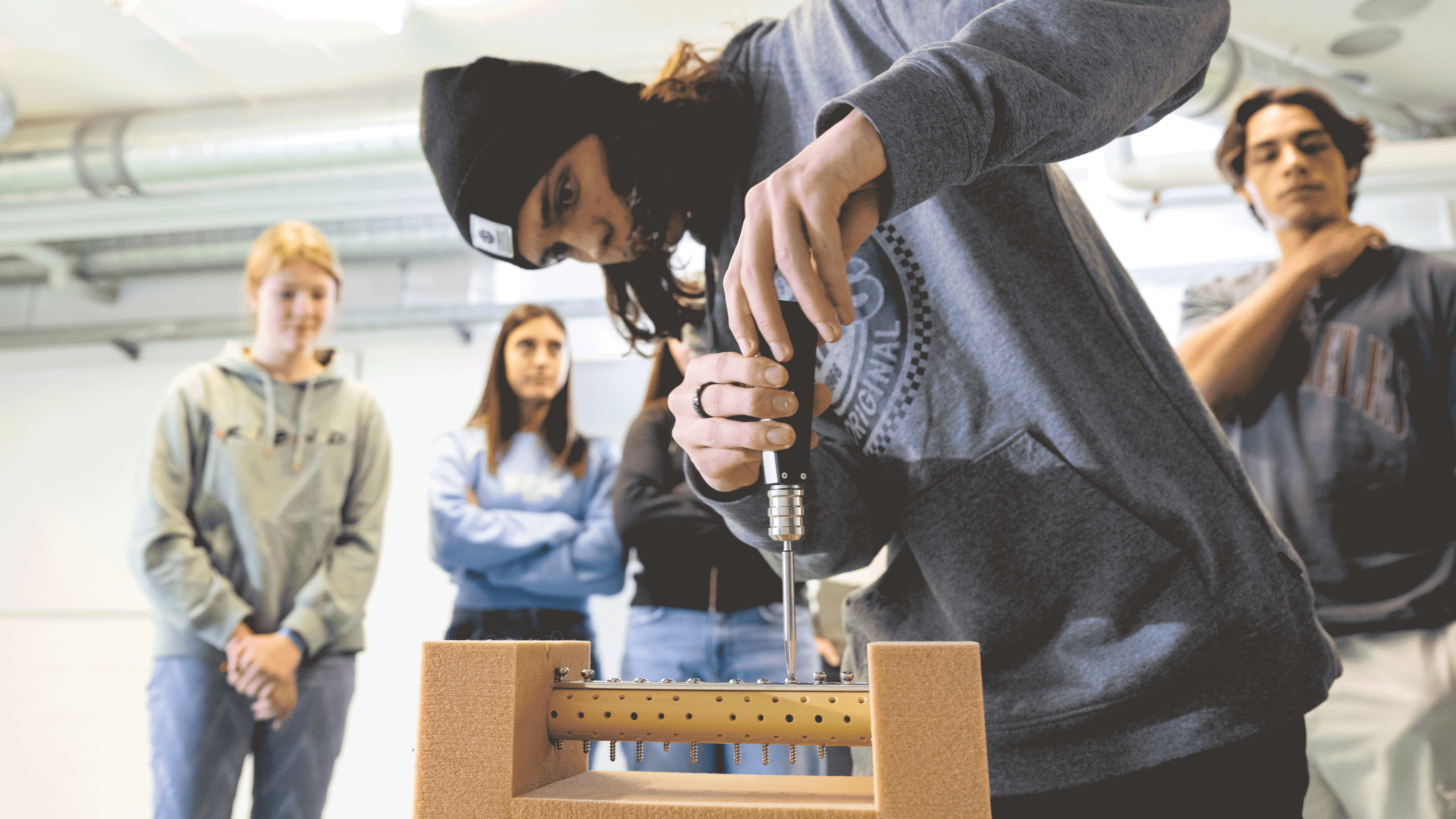Learning the art of fixation

Last Monday, two classes from the Schweizerische Alpine Mittelschule Davos received an insight into the surgical treatment of bone fractures under the guidance of experts from the AO Foundation and Spital Davos.
“As a surgeon, I always like to show a few snapshots,” said Hans-Curd Frei, head of surgery at Spital Davos, with a grin. “If you prefer not to look at my snapshots, it’s best to close your eyes for a moment.” But very few of the students present closed their eyes when it became clear what Frei meant by “snapshots,” and a picture of a wrist operation appeared on the screen—blood, bones, instruments, and screws included. There were a few uhs and oos, but most of the students in classes G5a and G5b at the Schweizerische Alpine Mittelschule Davos (SAMD) didn’t seem to have a problem with the sight of an operating field.
The AO Center Davos and Spital Davos traditionally invite classes from the SAMD to learn about osteosynthesis before the AO Davos Courses. On the previous Monday, the students visited the AO Center, where the AO’s Christoph Sprecher and PhD Student Marcia Mürner gave them a tour of the center and introduced them to the history of osteosynthesis and the AO Foundation.
Also on the previous Monday, the focus was on the “skills lab” at Spital Davos. After a short introduction to surgical fracture treatment, the students were taken “down to the basement,” where practical exercises awaited the students. Hans-Curd Frei illustrated how intramedullary nails are used to fix lower leg fractures. “Can a nail like that come out again?” one of the students wanted to know. “For a patient your age, the nail would be removed again,” answered Frei. “However, it would be better not to do that now in November, because after the removal the bone must rebuild itself, and you would have to take it easy for two to three months. So you wouldn’t be able to ski all winter.”
At the second station, the AO’s Urs Schlegel was busy “breaking bones” with his group. An artificial tibia bone was inserted into a device that overloads it in internal rotation, breaking it in a way that is commonly seen in human lower leg fractures. When the bone cracked loudly, the group audibly shuddered. “This is a noise you might also hear when one of your own bones breaks,” commented Schlegel. “Now, who would like to break the next bone?”
Meanwhile, Peter Däscher from the AO showed a third group of students how much precision and sensitivity operating requires. The students practiced screwing on artificial bones. “You need the optimal torque so that on the one hand the plate doesn’t wobble, but on the other hand you don’t injure the bone,” explained Däscher. Between 60 and 85 percent of the stripping torque is ideal. This can be measured precisely with a computer-assisted screwdriver. “He’s already an expert, we could send him straight to university,” commented Däscher when a student achieved 73 percent. Biology teacher Alexander Fehr was less successful. As he turned the screw into the bone, there was a cracking sound. “The surgeon would now have to move on to the next drill hole,” smiled Däscher.
Although many of the students clearly enjoyed the practical exercises, no one really wanted to raise their hand when Däscher asked: “So, who’s interested in studying medicine?” But perhaps the AO team might be able to inspire a few of them at the AO Davos Courses in early December, when the students with specializations in the natural sciences will have another opportunity to demonstrate their skills.
You might also be interested in:
- Discovering what’s going on at the AO Davos Courses 2023
- A science-savvy student with three cats: Competing with Cats
- AO Founder, Peter Matter, celebrates his 90th birthday
- Celebrating 65 years of the AO

